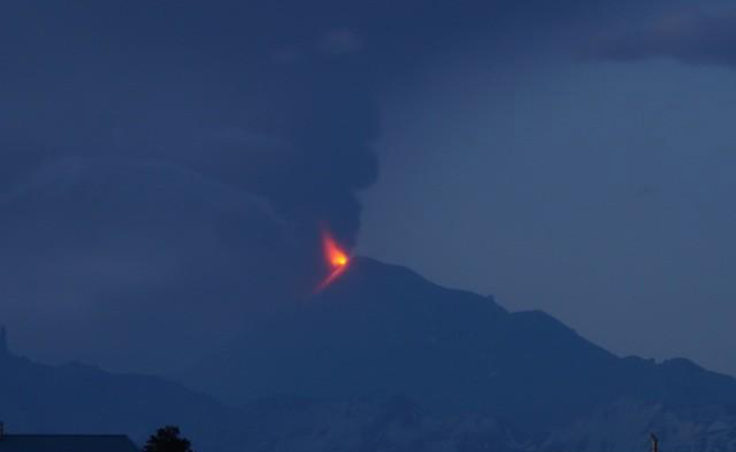In the past few months, Alaska’s seen a flurry of volcanic eruptions and sizable earthquakes. It’s disrupted life in the Aleutian Islands and the far western Brooks Range — and it’s got scientists wondering how all the activity might be connected.
Right now, five volcanoes in the Aleutian Islands are on alert. John Power of the Alaska Volcano Observatory says it’s the most activity they’ve seen at once in their 26-year history.
“We’re as busy as we’ve ever been in terms of the number of volcanoes that are active in the state,” Power says.
Only one of those has caused major disruptions so far — Pavlof Volcano sent up an ash plume and prompted days of local flight cancellations earlier this month.
But volcanoes seem to be waking up all across the chain. Shishaldin, Cleveland and Veniaminoff in the eastern and central Aleutians have been on alert for months now. In the western Aleutians, the AVO put Semisopochnoi on watch just last week.
But does it mean there’s something causing all these flare-ups? Power says, not necessarily.
“At this point, you know, we have to say it’s coincidental,” he says. “It could be that there is a larger process at work, but we’re not able to say what that is at this point in time, or if there is such a process. You know, perhaps the answer is we haven’t been looking long enough to know.”
Scientific understanding of plate tectonics began evolving in Alaska with the 1964 Good Friday quake, and Power says it’s still a work in progress. If there is something bigger going on, they can’t identify it — at least not yet.
That’s also true a thousand miles north of the Aleutians, where another seismic mystery has stretched across two months. Outside Noatak in the far western Brooks Range, there’s been a series of five earthquakes, each with a magnitude 5.7. The latest was on Monday.
Mike West of the Alaska Earthquake Center says the Noatak quakes are too far away to impact volcanoes in the Aleutians.
“Some of this is just a confluence of what really is day-to-day activity in Alaska,” he says.
But West also says their grasp on that activity is, well, shaky. They know the basics: a tectonic plate in the region seems to be slowly pulling away from the continent. Normally, that would cause one large quake. Here, West says it’s caused five smaller quakes instead.
“You can think of this as the earth sort of inching along instead of doing it in one big movement,” he says.
Still, a 5.7 magnitude earthquake is nothing to scoff at. It shows up on seismic monitors around the world, including the 400 stations in Alaska. For West, that’s a good thing. Even with two new short-term monitors in Noatak and Kotzebue, he doesn’t get enough information from the Noatak-area network alone.
“We have never had a focus on Western and Northern Alaska, and I personally feel that’s a bit of a liability for the state,” West says. “This sequence certainly indicates that there’s plenty of opportunity in these areas for earthquakes to intersect with populations.”
That’s his takeaway from this period of heightened activity — Alaskans live on volatile land. Quakes and volcanoes can damage property in the interior and interrupt air travel or set off tsunamis at sea. Even in remote towns, West says more monitors are always a good thing.
Back in the Aleutians, the AVO’s John Power is getting ready for some new monitoring of his own — on active Cleveland Volcano, located in the uninhabited Islands of the Four Mountains. This summer, the AVO will tag along with an archaeological expedition to put seismic monitors on Cleveland for the first time.
It’s a step forward, but there’s still a long way to go. Four of AVO’s on-alert volcanoes are repeat offenders with a long baseline of data. The fifth is more of an outlier. Semisopochnoi had been quiet since 1987 — the year before the AVO was formed – before it rumbled to life with a swarm of little earthquakes last week.
Since the island is so remote, Power says they don’t know much about it.
“It’s a volcano with a fairly violent past — it’s had a whole number of eruptions…. It’s actually a large caldera with a whole number of vents and very large lava flows that our geological investigations suggest are not that old,” he says. “And we are currently watching it very, very closely, because the type of activity it’s experiencing is what you might see or might expect at a reawakening volcano.”
Like the scientists near Noatak, Power says the AVO focuses on what they can address in the short term. They might not fully understand the science of what’s happening — but they can do their best to keep tabs on it.


